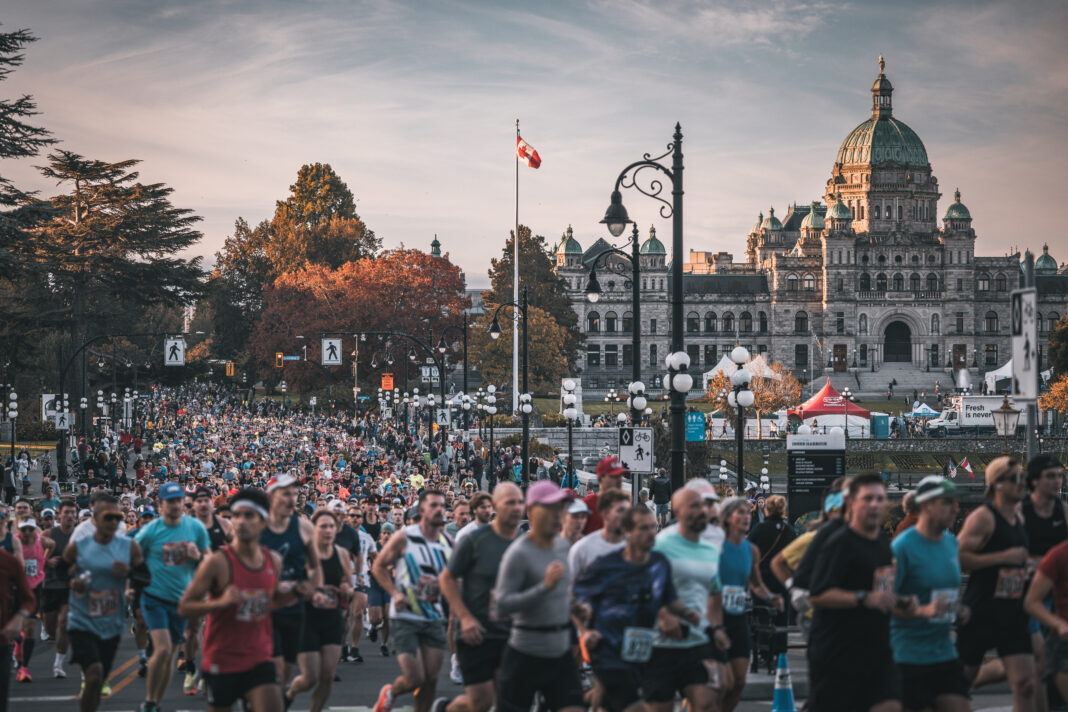This training plan is for runners who have either run marathons before, or who have recently completed a 10-kilometre race or half-marathon (or can run those distances comfortably), AND are currently maintaining weekly training volume of at least 25 plus kilometres a week (on at least three runs/week), before starting. It is primarily designed for those looking to improve marathon performance and/or run a sub four-hour time goal.
It is strongly advised—especially for those aged 35 and over—and/or who live largely sedentary lives, to include 30-minute brisk walks five/six times a week during training. Supplementary running-specific strength training (especially lower body and core) is recommended at least twice a week—to help stay injury-free.
Training Tips
- Each week, there are up to three quality workouts—Tuesday, Thursday and Sunday. These drive 80 per cent of your improvement and fitness, so make them your key training priority.
- Workouts can be shuffled within a given week, and key runs can even be moved between weeks, to accommodate personal circumstances, but strive not to break the “hard/easy” principle (quality runs on back-to-back days) or do runs of the same character in back-to-back weeks.
- Be flexible. It’s perfectly fine to adjust any given run distance by +/- 1 to 2 kilometres, and any given pace by +/- 5 to 10 seconds/kilometre. even under ideal run conditions.
- Missed runs, by more than one day, are best left behind. Re-focus and recommit to current/future runs rather than trying to play catch up and squeezing in extra volume or frequency in an effort to make up. The goal is consistency and progress, not perfection!
- Prescribed paces assume ideal conditions, both external, such as temperature, flat course, low winds, and internal—your own health, stress level, etc. Please adjust paces to reflect those circumstances and conditions. On some runs that can mean running 20 – 40 seconds/kilometre slower than target pace.
- Hills. Where average elevation is referenced (i.e. 10 metres/kilometre), use your GPS device and/or online training log to check the total “climb” of particular runs to verify how hilly/flat they are, e.g. a 12-kilometre hilly OMP should have approximately 120 metres of elevation.
Legend
OMP – Ordinary Mortal Pace. Run as strongly, smoothly and confidently as possible without overreaching. For most runners this is a little faster than marathon pace, a little slower than half-marathon pace.
WU/STR/CD – Warm-up/strides/cool down. Easy running at or slower than current LSD (Long Slow Distance) pace, done before/after hard effort runs. Strides are approximately 100 metre smooth accelerations to faster than target training pace (but not all-out sprinting).
Triple Thrill Hills – these are sets of three different distance hills, with slightly shorter recovery easy runs between hills within sets, and slightly longer recovery easy runs/rest between sets.
P1-2 Punch Progression Run – consider these two parts of a single run workout. They should always be done within 12 – 24 hours of each other, otherwise the intended benefit is largely lost. P1 is a slightly slower/easier than usual OMP run (think hilly OMP pace done on flat course), designed to leave you not fresh to start P2. The Progression Run the next day is a long run with a very exaggerated negative split. You must start slow for the first one to three kilometres (i.e. 30 – 40 second/kilometre slower than LSD pace) in order to have any chance of continually picking up speed (closing at approximately half-marathon pace). This combination run emulates the fatigue of the final 10 – 12 kilometres of a marathon, without actually running the full distance in training. This lowers injury risk and speeds up post-run recovery and teaches you how to pick up effort/pace late in the race when it’s hard to do (and you need it most).
Download a PDF of the 17-Week Marathon Training Plan
Photography by Matt Cecill Visuals
You may also like: 16 Weeks to Your Best Marathon Time

Read This Story in Our 2024 Running Issue
Featuring Canadian Olympic, National & North American Marathon Record holder Cameron Levins. Run your way around the world with some cool, quirky and unconventional races. Train for 10 km right up to a marathon – plus a 25 km trail run and 70.3 program. Strength workouts for runners, spice it up to improve your performance and so much more.

















